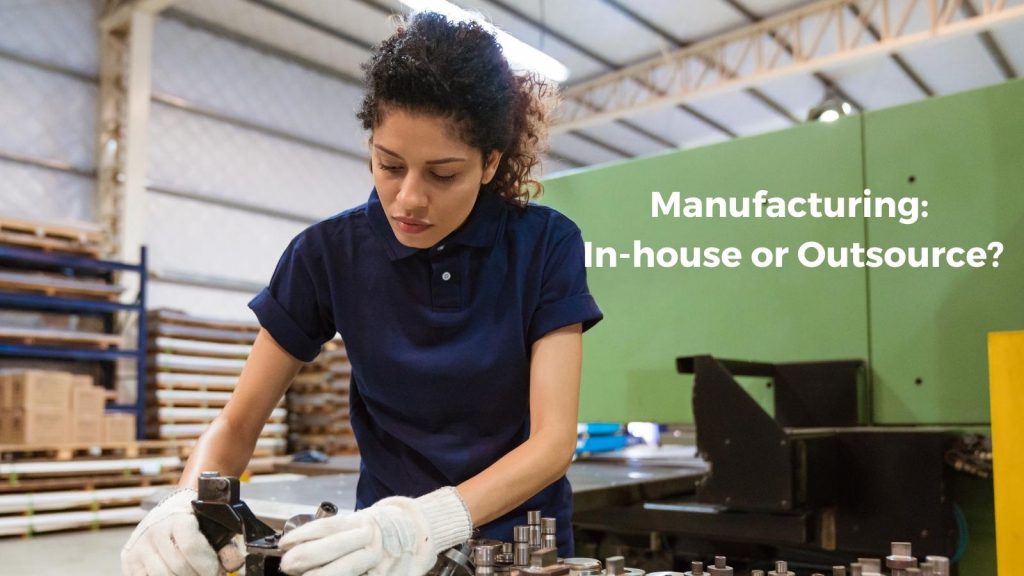When you first start out in the manufacturing business, you spend a long time figuring out what you’re going to sell. You focus on product development, market research, and other processes that help you to determine whether the idea you have is really worth selling and whether you can make a profit from it too.
Once you have your final idea and are ready to go ahead with the next steps, you may find that you come to a halt. So many of us spend so long thinking about creating our product that we don’t pay too much attention to how we’re going to create that product.
This requires a manufacturing process, which will take raw materials or ingredients and combine them in a way that produces your final product that can then be packaged and shipped to customers.
Manufacturing, of course, is extremely complex in itself. Therefore, you’re going to want to make sure that you get the process right the first time around. Getting it right from the start means no wasted costs.
Here’s some information that will better inform you about this step in your business’ progression.
Table of Contents
Types of Manufacturing Businesses
Manufacturing businesses can be categorized into several types based on their production processes and output. Discrete manufacturing produces distinct units like automobiles, appliances, or electronics.
Process manufacturing creates bulk products like chemicals, food, or beverages. Repetitive manufacturing repeatedly produces the same goods, often using an assembly line. Job shop manufacturing handles custom or one-off orders for specialized products.
Finally, batch manufacturing involves producing distinct batches of products before transitioning to a new batch.
Your Manufacturing Business Options
When it comes to a manufacturing business, you usually have two broad options available to you.
You can outsource your manufacturing to a third party, meaning that they provide the space, facilities, machinery, and workers required to produce your goods for an agreed cost.
The alternative is to manufacture in-house, which means investing in space, machinery, parts, staff, and more to create the products yourself.
Outsourcing Manufacturing: The Pros and Cons
The vast majority of startups tend to outsource their manufacturing process. It is a lower cost, to begin with.
You don’t need to invest in everything required to make your products, which tends to be favorable when you’re still testing the waters of whether your product will sell or not.
Therefore, you can outsource the manufacture of the first run of products and if they don’t sell, you can discontinue them. No need to worry about selling machinery or being tied into a contract on the premises you’re using for manufacturing.
Of course, when you outsource, you do leave quality control and time scales in someone else’s hands. You also have to pay an ongoing third-party cost to the manufacturer if you use them in the long run.
In-House Manufacturing Business: The Pros and Cons
An In-house manufacturing business gives you a lot more control over production, from time scales to quality. You also save money in the long run, as you don’t have to pay a middleman to do your production for you while generating a profit for themselves.
However, you do have to invest a lot to get up and running. This tends to be a preferable option for manufacturing businesses that have already established themselves.
Hence, they know there is an ongoing demand for their product. By producing it in-house, they will recoup costs on initial investments over a course of months or years.
AI In Manufacturing Business
AI in manufacturing is a game-changer. It boosts efficiency, reduces errors, and cuts costs. From predictive maintenance to supply chain optimization, AI-powered solutions streamline operations.
Smart factories leveraging AI gain a competitive edge by increasing productivity and product quality. However, implementing AI requires upfront investments in technology and training.
Companies must carefully evaluate their needs and projected ROI before adopting AI solutions.
For many manufacturers, the long-term benefits of AI justify the initial costs, making it a worthwhile investment for staying ahead in today’s market.
Conclusion: Decisions of Manufacturing Business
Manufacturing is a process that all businesses will have to deal with if they sell products. So hopefully, some of the advice outlined above will help you to determine what path is best for your manufacturing business.
Have you done manufacturing in-house or outsourced it? I’d love to hear from you about it in the comments below.
Manufacturing Business: Making the Right Decisions Share on X
